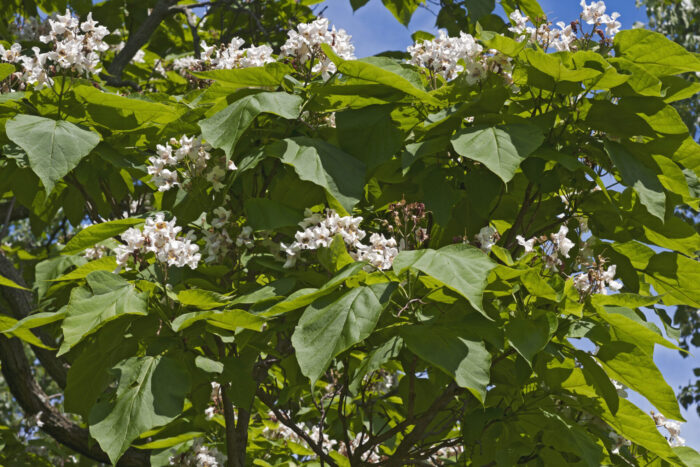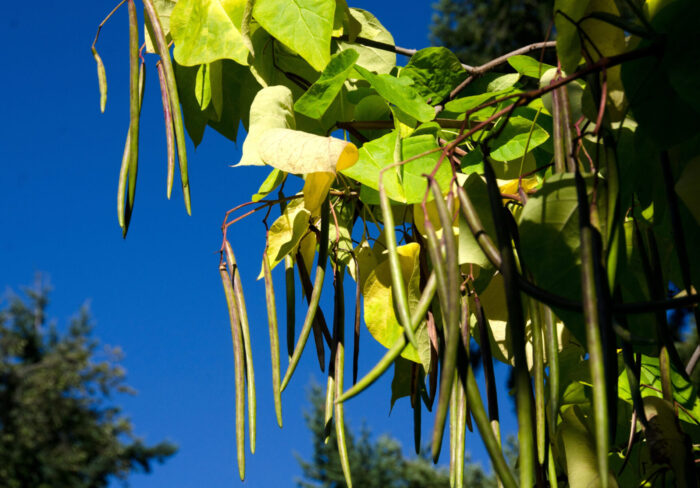Description
Latin Name: Catalpa speciosa
Hardiness Zones: 4-8
Common Names: Cigar tree, Caterpillar tree, Hardy catalpa, Western catalpa, Indian Bean Tree, Catawba Mature Size: Typically grows 40-70 feet (12-21 meters) tall with a spread of 20-40 feet (6-12 meters) wide. Its crown is slightly irregular, ranging from round to oval in shape (Missouri Botanical Garden).
Soil and Climate Requirements: Catalpa speciosa thrives in well-drained medium soils (Missouri Botanical Garden). It prefers full sun to partial shade and can adapt to a wide range of soil types including acidic, alkaline, loamy, moist, rich, sandy, silty loam, well-drained, wet, and clay soils. It tolerates various moisture conditions, including occasional flooding and hot, dry climates.
Notes: The leaves are oblong to ovate, growing up to 12 inches (30 cm) long and 4-8 inches (5-20 cm) wide, with pointed tips and wider bases. They are initially green to yellow-green, turning yellow in autumn. Catalpa typically begins flowering after seven years, producing large, trumpet-shaped, fragrant flowers in late spring to early summer. Flowers grow in clusters, approximately 2 inches (5 cm) long, and are white with yellow and purple interiors. Long seed pods, appearing every 2-3 years, measure 12-22 inches (30-56 cm) in length with 1-inch (2.5 cm) seeds, turning brown as they mature in fall. These pods split open to release seeds, giving rise to the common name “Cigar Tree.” Mature tree bark is ridged and light gray-brown. Catalpa can develop a twisted trunk and requires cleanup after pod drop.
Potential Issues: Catalpa speciosa is generally resistant to serious problems or pests but may be susceptible to leaf spots, twig blight, verticillium wilt, and mildew. The caterpillars of the catalpa sphinx moth are a notable pest (Missouri Botanical Garden).
Wildlife Value: Attracts hummingbirds, Catalpa Sphinx Moth, and bees.
For more information, visit:
- Virginia Tech Dendrology: [link]
- Missouri Botanical Garden: [link]

















Aaron Luecking –
They are growing nicely. 4 out of 5 made it although I haven’t given up on the 5th yet. Wasn’t sure they would lead out, but sure enough did. Liked the pricing and shipping response.